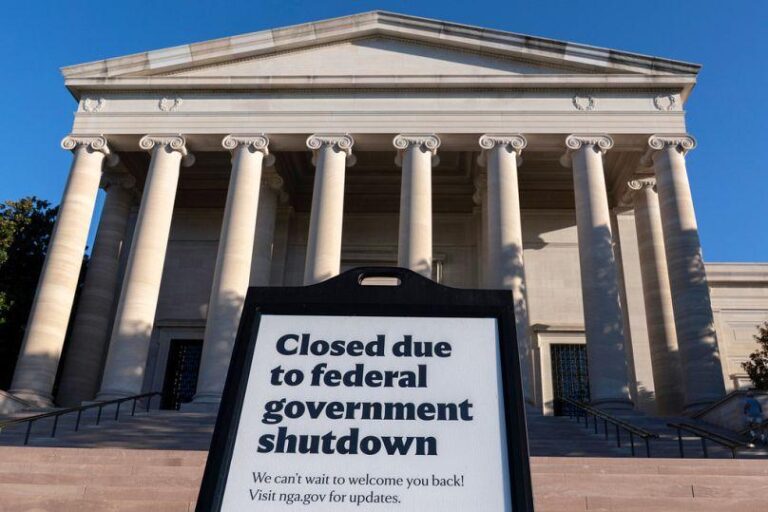Looming Government Shutdown as Budget Talks Reach Deadlock in Washington
With the federal funding deadline fast approaching, Washington is on edge over the growing likelihood of a government shutdown that could commence as soon as midnight this Friday. Congressional leaders and the White House remain entrenched in disputes over critical budget allocations, particularly concerning defense expenditures, healthcare funding, and social welfare programs. This impasse has intensified partisan tensions, with lawmakers warning that failure to reach an agreement will halt vital government functions and delay employee paychecks.
Several core issues are fueling the stalemate:
- Military Spending: Contentious debates over proposed increases in defense budgets have brought negotiations to a standstill.
- Healthcare and Welfare Funding: Disagreements persist regarding the scope and scale of social program financing.
- Tax Policy Revisions: Talks on modifying revenue measures remain unresolved.
| Political Faction | Primary Budget Demand | Current Stance |
|---|---|---|
| Democratic Party | Expand social welfare funding | Non-negotiable |
| Republican Party | Increase defense budget | Unyielding |
| Executive Branch | Seek balanced compromise | Advocating middle ground |
Economic Fallout of a Shutdown: Market Volatility and Disrupted Public Services
Financial markets are already exhibiting signs of instability as investors prepare for the potential fallout from a government shutdown. Stock indices have become increasingly volatile amid concerns over Treasury funding continuity and delays in federal contract payments. Experts caution that a prolonged shutdown could heighten credit risk perceptions, particularly affecting short-term government debt instruments and driving up borrowing costs for both public agencies and private enterprises. The repercussions may also reverberate internationally, undermining confidence in U.S. fiscal management and prompting investors to shift assets toward traditional safe havens such as Swiss francs and gold.
On the operational side, a shutdown threatens to disrupt essential government services that depend on uninterrupted federal funding. Critical sectors including air traffic control, emergency response, and social welfare programs face furloughs or reduced staffing, potentially compromising service quality and public safety. Additionally, services like national park access, visa processing, and social security benefits could experience significant delays, exacerbating public inconvenience and slowing economic activity. The table below outlines anticipated service disruptions:
| Government Service | Severity of Impact | Projected Downtime |
|---|---|---|
| Social Security Administration | Severe | Delays up to 14 days |
| Federal Aviation Administration | Moderate | Reduced operational hours |
| National Parks | Severe | Complete closures |
| Immigration and Visa Services | Critical | Indefinite processing delays |
Investment Strategies Amid Political Uncertainty: Insights from UBS Analysts
UBS experts advise investors to adopt a prudent approach in light of escalating political risks in Washington. The looming threat of a government shutdown is expected to amplify market fluctuations, necessitating a cautious evaluation of risk exposure. Their guidance stresses the value of portfolio diversification to shield against potential downturns, especially in sectors vulnerable to fiscal disruptions such as consumer discretionary and government contractors.
Recommended portfolio adjustments include:
- Enhancing allocations in defensive industries such as utilities, healthcare, and consumer staples.
- Increasing liquidity reserves to capitalize on buying opportunities once the crisis subsides.
- Scaling back investments in high-volatility assets prone to sharp swings amid legislative deadlock.
| Sector | Recommended Action | Risk Profile |
|---|---|---|
| Utilities | Increase Exposure | Low |
| Technology | Reduce Exposure | High |
| Healthcare | Maintain Current Allocation | Moderate |
| Government Contractors | Decrease Exposure | High |
Strategies for Legislators to Prevent Prolonged Budget Deadlocks
To avoid recurring fiscal stalemates, policymakers should emphasize transparent and consistent communication that encourages bipartisan collaboration. Instituting an independent mediation body, insulated from political pressures, could facilitate more effective and timely budget negotiations. Furthermore, enacting automatic contingency funding mechanisms that activate during budget impasses would help maintain government operations without interruption.
Additional measures include enforcing strict budget deadlines with penalties for non-compliance to incentivize prompt agreement. Lawmakers might also explore phased funding approaches, enabling partial government functions to continue while comprehensive budget deals are finalized. The table below summarizes legislative tools designed to reduce shutdown risks:
| Legislative Mechanism | Objective | Anticipated Outcome |
|---|---|---|
| Independent Mediation Panel | Neutral facilitator for budget talks | Accelerated conflict resolution |
| Automatic Continuing Resolutions | Interim funding during deadlocks | Prevents full government shutdowns |
| Phased Funding Model | Partial government operation | Minimizes service interruptions |
| Enforced Budget Deadlines | Mandated timelines with penalties | Promotes timely budget passage |
Conclusion: Navigating the Path Forward
As the funding deadline looms, the threat of a government shutdown continues to cast a shadow over Washington, with far-reaching consequences for financial markets and public services. UBS analysts stress the urgency of bipartisan cooperation to prevent disruptions and restore market confidence. Stakeholders nationwide will be watching closely as lawmakers intensify efforts to break the deadlock and secure a sustainable budget agreement.







